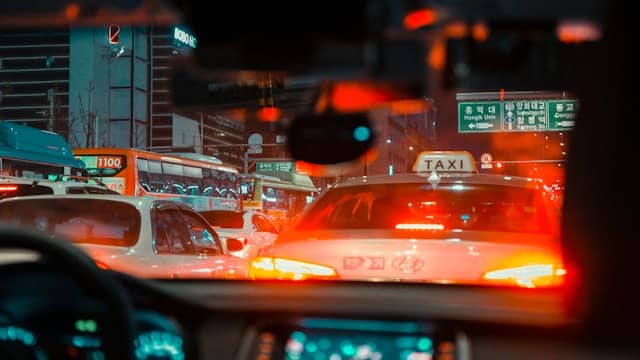The Surprising Ways City Driving Hurts Your Vehicle
 Navigating bustling city streets is an unavoidable reality for many drivers, yet few realize just how hard daily urban commutes can be on their vehicles.
Navigating bustling city streets is an unavoidable reality for many drivers, yet few realize just how hard daily urban commutes can be on their vehicles.
At Chaney’s Collision Centers, we’re passionate about keeping you informed so you can protect your investment and minimize costly repairs. Here’s a closer look at the sneaky ways city driving takes its toll—and how to fight back.
Stop-and-Go: The Silent Killer
City traffic means endless stopping and starting, which puts strain on your vehicle well beyond what you’d experience cruising on the highway:
- Accelerated Brake Wear: Every red light, crosswalk, and bumper-to-bumper queue forces you to hit the brakes. This wear and tear can shorten the life of your brake pads significantly, requiring more frequent replacements.
- Transmission and Engine Stress: Constant stop-and-go action makes your engine and transmission work double time, causing heat buildup and quicker component fatigue.
- Increased Fuel Consumption: Urban driving is far less efficient, with vehicles gulping more fuel per mile than during steady highway cruising.
Rough Roads and Sneaky Potholes
Urban streets are notorious for their rough surfaces, potholes, and speed bumps. These everyday hazards lead to:
- Suspension Damage: Your suspension system absorbs the brunt of every bump and jolt. Over time, city roads can lead to worn shocks, busted joints, and expensive alignments.
- Wheel and Tire Trouble: Hitting potholes or scraping curbs during parallel parking can cause misalignments, bent rims, or tire sidewall damage that shortens your tyres’ lifespan.
Short Trips, Big Headaches
City drives tend to be shorter, which might seem harmless—but they can actually be worse for your car:
- Incomplete Engine Warm-Ups: Short trips often don’t allow the engine and oil to reach optimal temperatures. This leads to increased condensation, which encourages rust, corrosion, and inefficient lubrication of engine parts.
- Strain on Batteries: Frequent starts with limited recharge time drain batteries faster, increasing replacement frequency.
Environmental Wear
Living and parking in the city exposes your vehicle to relentless environmental factors:
- Air Pollution: Urban smog and soot can clog air filters and diminish engine performance. They also contribute to faster contamination of oil and fluids, requiring more regular maintenance.
- Paint Damage: Pollution, bird droppings, and cramped parking mean more scratches, surface rust, and faded paintwork—all of which can lower resale value.
Everyday Urban Perils
City driving isn’t just rough on the mechanics. It’s also a minefield for minor damage:
- Parking Dings and Scratches: Tight garages, crowded streets, and hasty parallel parking lead to grazed bumpers, scuffed wheels, and door dings that add up over time.
- Fender Benders: Low-speed collisions are more common in congested areas, leaving your car vulnerable to ongoing cosmetic and structural damage.
How to Reduce City Wear and Tear
- Stay Vigilant: Spot and avoid potholes, leave generous space when parking, and brake gently to minimize sudden stops.
- Increase Maintenance Frequency: Schedule more regular brake checks, oil changes, and tire rotations when most of your miles happen in the city.
- Protect Your Finish: Consider waxing your car often and parking in garages to fend off environmental factors.
- Watch for Hidden Damage: If your ride feels rougher or your brakes get noisy, get it checked right away.
Conclusion
City driving is harder on your vehicle than you might expect, but with proactive care and timely repairs from experts like those at Chaney’s Collision Centers, you can ensure your car stays reliable and looking its best—no matter how crowded the streets become.

